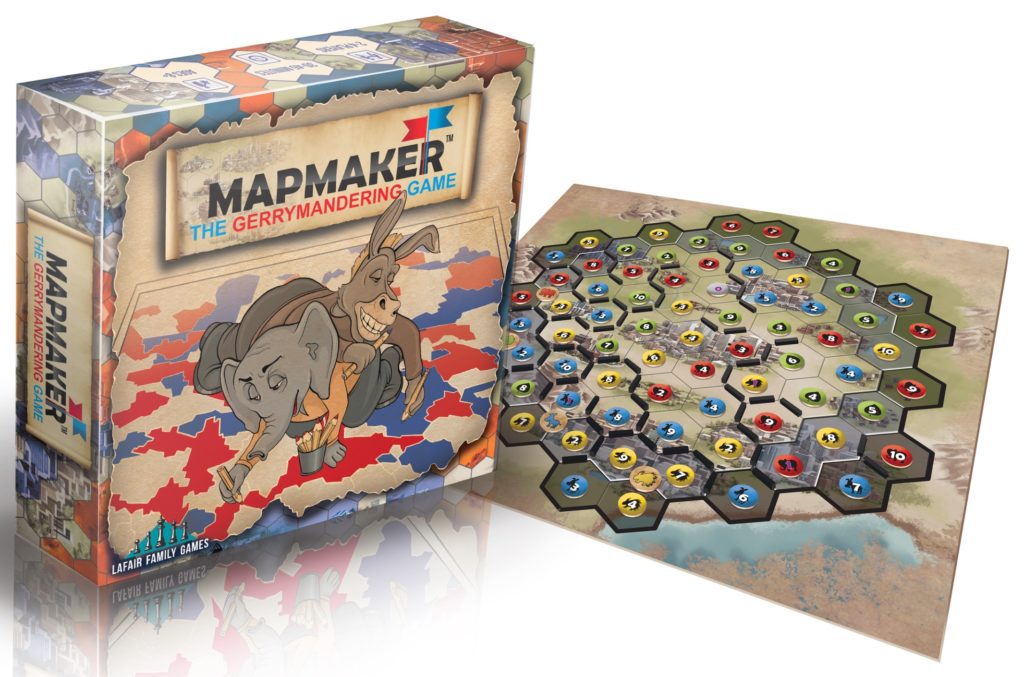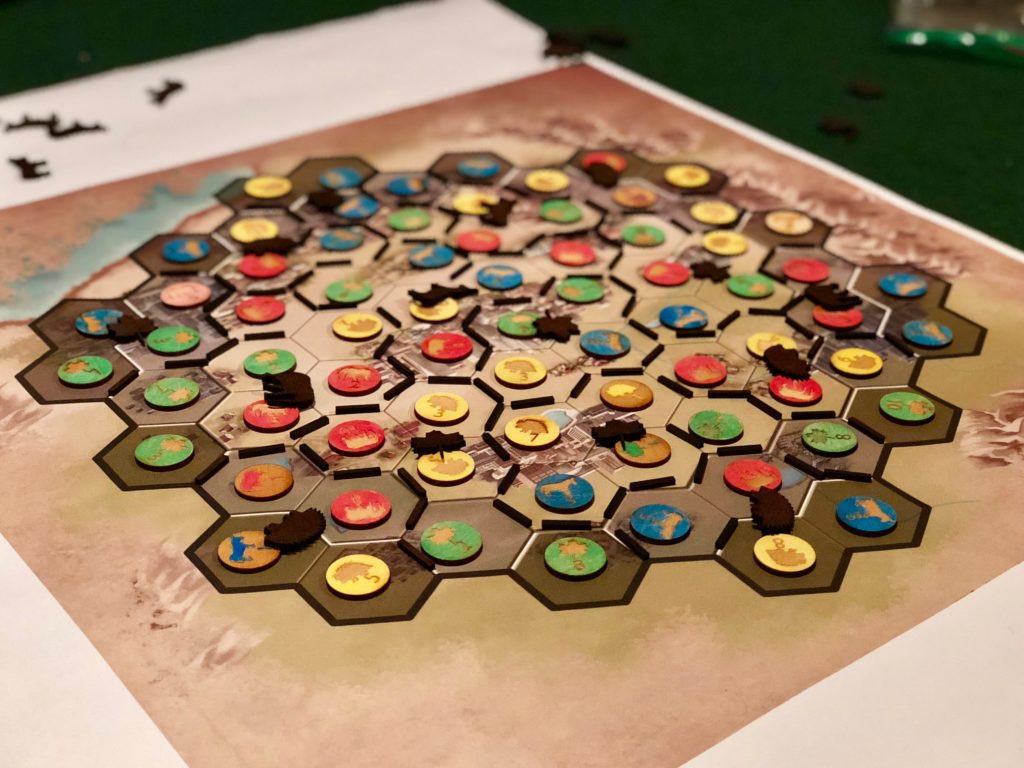I know jack about politics. I couldn’t tell you the difference between a liberal and a conservative or why one US party uses an elephant to represent them while another uses a donkey. Why not dragons? It worked for Emilia Clarke right? Anywho, I’m not here to convey my limited views on how the US government is run…rather, I’m here to talk about a game that doesn’t care if you don’t know anything about politics. “Mapmaker” is fully accessible and playable for just about anyone, making it a Kickstarter project that one should seriously consider backing. Special thanks to Game Designer Josh Lafair for reaching out and providing me with a prototype for preview purposes. It’s important to stress that prototypes are often not reflective of the final product, making everything you see here (including the rules) subject to change.

Firstly, I’m not afraid to admit that I had to Google the word, “Gerrymandering”. Like I said, politics and I just don’t get along. To paraphrase my findings, it means to manipulate boundaries in order to favor a particular political party. Unsurprisingly, that’s exactly what one does in “Mapmaker”. After giving the game a try, I was left with the impression that it was the spawn of “Ingenious”, “Catan”, and “Dots”…I know, weird right? The board is broken up into hexes, the outer borders of which are shaded darker to signify their use (or non-use) in a two, three, or four player game (hence where “Ingenious” comes to mind). One lays down colored line pieces along the hex lines (like “Catan”) until a legal district is formed (kinda-sorta like “Dots”).
My prototype copy came with one board (each hex is called a county), 110 district border pieces, 75 voter tokens (18 per party valued 1-10, 1 neutral valued 0, and 2 spare), and 28 district markers (7 per party). To set up, each player chooses a party. Next, randomly distribute voter tokens onto the board along with the neutral token. This is where the game slightly differs from “Ingenious” in that the board here is initially populated. In a two player game, the outer light grey and dark grey counties/hexes are ignored. In a three player game, only the dark grey counties/hexes are ignored. The main goal of the game is for players to section off these numbered voter tokens to their favor in order to win the most districts.
Before going on it’s important to explain what a district is and why one could or couldn’t be formed. A district is a fully closed-off group of counties and must contain at least four counties. If it could be split into smaller districts, then it isn’t a district. There are instances where eight hexes cannot be split into two districts of four each, based on where the district lines are laid. When a district is formed, the player with the most votes by counting the values on their colored voter tokens wins that district and places a marker inside that district. In the event of a tie, whoever closes off the district (even a third player) chooses who the winner is among the tied players.

So now that we know what a district is, the flow of play is relatively simple. The first player of the game (whomever last voted) places one district line, then the second player places two, and so on until players are laying four district lines per turn. The game ends when the entire board is split into districts and whoever has the most districts wins. Ties go to the player with the most swing counties (those valued 0 or 1). While the above doesn’t explain EVERY rule in the rulebook, it should give you an idea as to how the game is played (and how simple it is to play it).
I’m pleased to report that I enjoyed my time with this particular prototype. For a prototype the components weren’t half bad and the rulebook laid things out in a pretty efficient manner. I did have to go back and look up a few things, but only because my old and overwhelmed brain didn’t register a few key & important sentences my first time through. An extra page for FAQs or bulleted reminders would be convenient/nice for folks like myself, but in all honesty it isn’t a deal breaker. More pages of text often equals higher developing costs and I get that. With my board game count reaching in the three hundreds at this point, I often got to thinking more than once that I’d love to see a digital adaptation of this game on Steam or some other digital platform.
I’m also grateful that “Mapmaker: The Gerrymandering Game” didn’t turn out to be one of those overly complex political games out on the market. I love “Twilight Struggle” but by gosh does it make my brain hurt, and good luck getting an eight-year-old to grasp the intricacies of the Cold War. Sure, they might recognize the words “Star Wars” but not in the context relating to Reagan’s speech on SDI. While the gameplay is relatively simplistic, it fits with the theme and doesn’t push any political buttons. I can easily see this as a family board game night regular, what with the quick average play time and light learning curve. I’m of the belief that one should never bring up money or politics at the dinner table, but this game could open the door for some political conversations should all parties remain civil and “adult”.
—
Kickstarter: http://bit.ly/GerrymanderingGame
—
